Best Fabrics for Swimwear: A Complete Guide
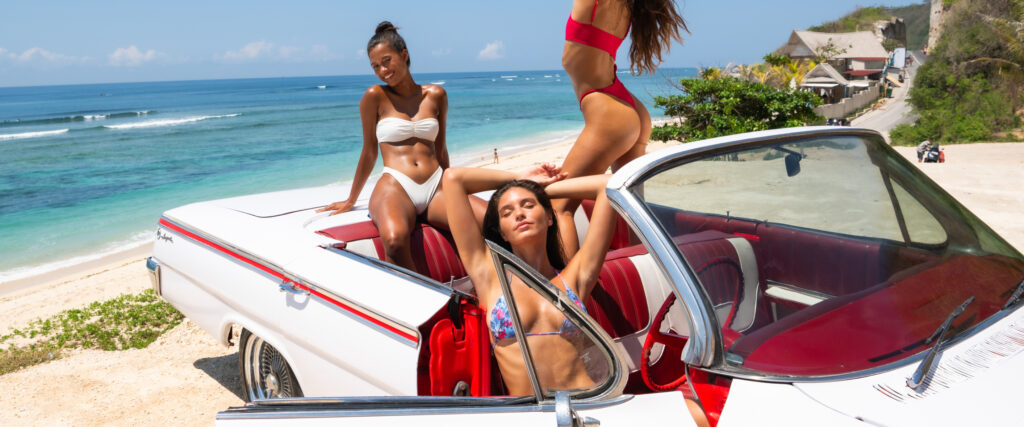
Best Fabrics for Swimwear: A Complete Guide When creating high-quality swimwear, the fabric you choose makes all the difference. Swimwear Bali is proud to offer a curated selection of premium fabrics that balance performance, comfort, and sustainability. Here’s a deep dive into why our fabrics are the perfect choice for your swimwear line. ECONYL®: Luxury Meets Sustainability ECONYL® is a game-changing fabric made from regenerated nylon. What does that mean? Think discarded fishing nets, old carpets, and industrial waste turned into a silky, high-performance fabric. ECONYL® doesn’t just feel luxurious; it’s also incredibly durable, offering resistance to chlorine, saltwater, and UV rays. By using ECONYL®, your brand can contribute to reducing ocean waste while delivering swimwear that stands out in quality and sustainability. REPREVE®: Recycled and Reliable REPREVE® is another top-tier option we offer, crafted from recycled plastic bottles. This fabric is ideal for brands looking to make an eco-friendly statement without compromising on durability or comfort. REPREVE® offers excellent stretch and recovery, making it perfect for creating swimwear that fits like a second skin. It’s also resistant to fading and stretching, ensuring your swimwear maintains its shape and vibrancy over time. Vita™: Performance and Elegance For brands focused on combining performance with elegance, Vita™ fabric is the way to go. This innovative material is made using ECONYL® yarn and offers superior elasticity, making it perfect for sleek, form-fitting designs. Vita™ is also highly resistant to pilling, ensuring your swimwear looks flawless even after repeated wear. Its lightweight feel and smooth texture make it a favourite among premium swimwear lines. Why Fabric Matters Choosing the right fabric isn’t just about aesthetics—it’s about functionality. Swimwear needs to withstand harsh elements like chlorine, saltwater, and sun exposure while maintaining its shape, colour, and elasticity. At Swimwear Bali, we ensure that every fabric we offer meets these demands, giving you a solid foundation for creating swimwear that delights your customers. Sustainability and Beyond In today’s market, sustainability is a must-have, not a nice-to-have. By using eco-friendly fabrics like ECONYL® and REPREVE®, your brand aligns with the growing consumer demand for ethical and sustainable products. Beyond the environmental benefits, these fabrics offer unmatched quality, ensuring your swimwear is as functional as it is fashionable. How to Get Started Ready to choose the perfect fabric for your swimwear line? At Swimwear Bali, our team is here to guide you every step of the way. Whether you’re designing bold bikinis or sleek one-pieces, we’ll help you select fabrics that bring your vision to life while meeting the highest standards of performance and sustainability.With Swimwear Bali, you’re not just choosing fabrics—you’re choosing a partner dedicated to your success. Let’s create swimwear that makes waves in both style and sustainability.
Why Starting Your Swimwear Brand is Easy, Affordable, and Profitable with Swimwear Bali
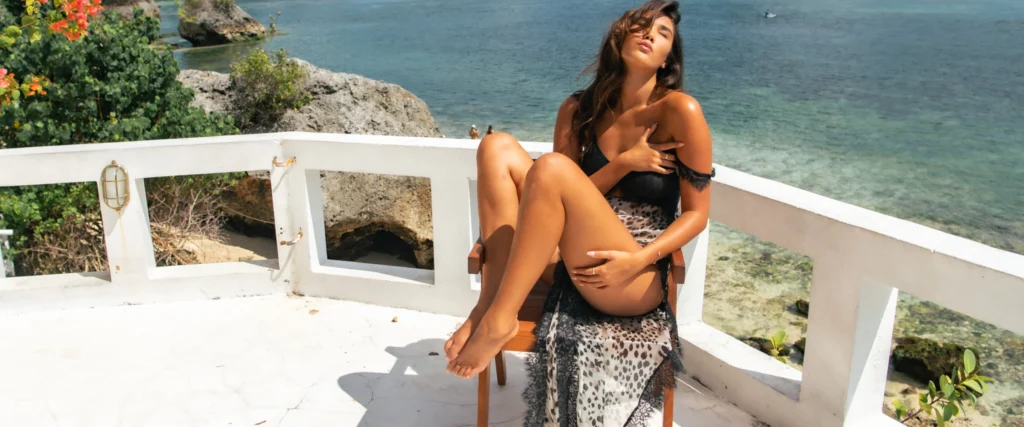
Why Starting Your Swimwear Brand is Easy, Affordable, and Profitable with Swimwear Bali Starting your own swimwear brand might seem like a big leap, but with Swimwear Bali, it’s simpler, more affordable, and far more rewarding than you think. As the only tax-free licensed manufacturer in Bali, we offer prices that are up to 30% lower than anyone else on the island—giving you a significant edge in profit margins.We don’t just stop at affordability. We supply some of the world’s top swimwear brands with high-quality, sustainable swimwear crafted with cutting-edge technology and expertise. With fabrics made from recycled materials like ECONYL®, your swimwear will not only look incredible but also help reduce carbon emissions by up to 80%, dramatically lowering your brand’s carbon footprint.By working with us, you’ll have everything you need to rightfully claim your production is eco-friendly, a major selling point for today’s conscious consumers. It’s time to make your mark in the sustainable swimwear market—and Swimwear Bali is here to help you do it profitably. Shop with Ease: Order Samples or Bulk Directly Online We’ve made it ridiculously easy for you to get started. Our online shop is designed for both startups and established brands, letting you quickly:Order Samples: Test your designs and feel the quality of our sustainable fabrics before committing to a larger order.Buy Bulk Hassle-Free: Once you’re ready to scale up, bulk orders are straightforward, with clear pricing and fast processing.Explore Sustainably: Browse our curated range of styles, colours, and eco-friendly fabrics—everything you need to create a standout collection.Whether you’re sampling designs or going straight to production, our shop is your one-stop solution. Stay tuned for the link—it’s your first step toward launching your swimwear brand! Choosing the Perfect Manufacturer for Your Swimwear Brand When it comes to turning your vision into reality, the right manufacturer makes all the difference. Here’s why Swimwear Bali is the ultimate partner: Eco-Friendly Fabrics: We specialize in sustainable materials like ECONYL® and REPREVE®, which are made from recycled plastics and reduce environmental impact. High-Quality Digital Printing: Our cutting-edge digital printing ensures vibrant colours on soft nylon fabrics. Forget sublimation on polyester—it doesn’t compare. Flexible Quantities: No need to overcommit. Unlike other manufacturers, we offer smaller, flexible fabric rolls so you can experiment with different styles and colours. TIP: By partnering with a manufacturer like Swimwear Bali, known for ethical practices and expertise in sustainable swimwear, you’re setting your brand up for success right from the start. Build Strong, Reliable Relationships with Suppliers The secret to long-term success? A trustworthy supplier who supports your growth. Here’s how we make it easy: Ethical Standards: We’re certified for using organic fabrics and sustainable production, so your brand can genuinely claim to be eco-friendly. Problem-Solving Partners: Challenges will come, but our team is here to help you navigate them—think of us as your production allies. TIP: Brands that partner with Swimwear Bali often praise our consistent quality, competitive pricing, and on-time delivery. Build a Standout Online Presence In today’s digital world, having an online presence isn’t optional—it’s your lifeline to customers. Here’s how to get it right:Launch Early: Secure your domain and put up a simple “coming soon” page while you finalize your collection. This helps with SEO and builds anticipation.Leverage Social Media: Platforms like Instagram are perfect for showcasing your designs and connecting with eco-conscious customers.TIP: Use blogs and lookbooks on your site to drive traffic. Customers love learning about your journey and sustainability efforts. Share Your Story: Create Engaging Content Your brand story is what makes you stand out. Share it proudly and authentically to connect with your audience. Highlight Your Why: Talk about why you chose sustainability and what inspires your designs. Customers love supporting brands with a purpose. Optimize for Search: Use tools like Grammarly and ChatGPT to polish your content and make it SEO-friendly. Blogs on swimwear trends or sustainable fabrics can boost your visibility. TIP: Start with your homepage—it’s your brand’s first impression. Make it clear, compelling, and all about your values. Deliver Customer Service That Wows Great customer service isn’t just a bonus—it’s what keeps customers coming back. Be Responsive: Reply quickly and positively to all inquiries. Customers notice and appreciate fast communication. Encourage Feedback: Listen to your customers and improve based on their suggestions—it’s a win-win. TIP: A single glowing review can bring in dozens of new customers. Go the extra mile to ensure your buyers are thrilled. Build Strong, Reliable Relationships with Suppliers The secret to long-term success? A trustworthy supplier who supports your growth. Here’s how we make it easy: Ethical Standards: We’re certified for using organic fabrics and sustainable production, so your brand can genuinely claim to be eco-friendly. Problem-Solving Partners: Challenges will come, but our team is here to help you navigate them—think of us as your production allies. TIP: Brands that partner with Swimwear Bali often praise our consistent quality, competitive pricing, and on-time delivery. Sustainability: Your Brand’s Biggest Strength In today’s market, sustainability is more than a trend—it’s a requirement. Swimwear Bali helps you build a brand that’s genuinely eco-friendly: Eco-Friendly Materials: Our fabrics are certified and reduce environmental impact, allowing you to offer products that align with modern consumer values. Carbon Footprint Reduction: Swimwear produced with recycled materials generates up to 80% fewer CO2 emissions, allowing you to inform your customers that your products are produced eco-friendly. TIP: Showcase your sustainability efforts on your website and marketing materials. Transparency builds trust and loyalty with your audience. Final Thoughts Starting a sustainable swimwear brand has never been easier—or more profitable. With Swimwear Bali by your side, you’ll enjoy lower costs, higher quality, and a genuine claim to eco-friendliness that today’s consumers demand. Ready to make your vision a reality? Explore our sustainable fabrics, contact us today, or schedule a call-back with a swimwear specialist. Together, we’ll create a swimwear line that’s not only beautiful but also makes a positive impact on the planet. Let’s build your brand—and the future of sustainable fashion—together!
The Future of Sustainable Swimwear Manufacturing
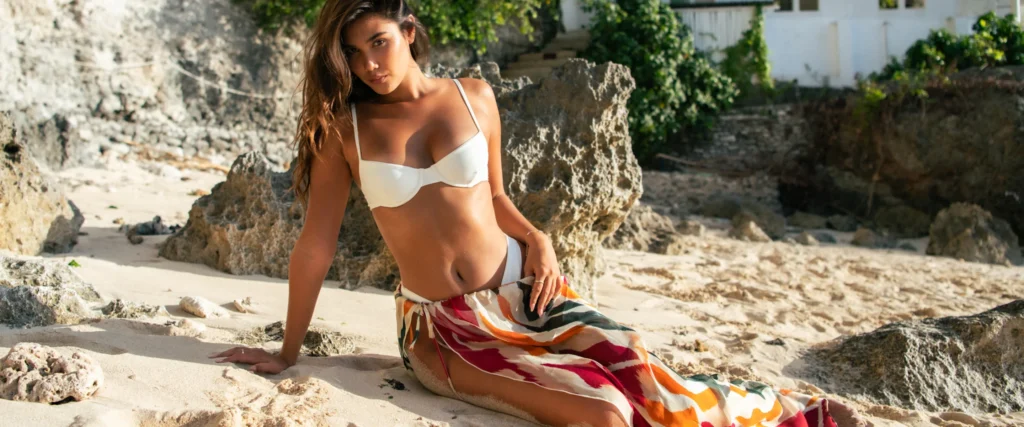
The Future of Sustainable Swimwear Manufacturing Sustainability isn’t just a trend; it’s a game-changer for the swimwear industry. And at Swimwear Bali, we’re not just keeping pace—we’re leading the charge. So, what does sustainable swimwear really mean, and why should it matter to your brand? Let’s start with the basics: materials. Swimwear Bali uses fabrics like ECONYL® and REPREVE®, crafted from recycled waste—discarded fishing nets, old carpets, and plastic bottles. It’s like giving trash a fabulous second life. These fabrics don’t just help clean up the planet; they perform like a dream. ECONYL®, for example, matches virgin nylon in quality but leaves a fraction of the environmental footprint. That’s the kind of win-win your brand needs. But sustainability isn’t just about the fabric; it’s about the whole process. We’ve re-engineered our production to be as planet-friendly as possible. From cutting down water and energy usage to implementing cutting-edge waste management systems, we’ve made every step of our manufacturing process smarter and greener. And guess what? Our clients love it because their customers do, too. Today’s shoppers aren’t just looking for a bikini; they’re looking for a statement. They want pieces that not only make them look good but also make them feel good about their choices. In fact, surveys show that people are willing to pay more for sustainably made products. By aligning your brand with sustainability, you’re not just keeping up—you’re standing out. And let’s talk business. Partnering with an eco-friendly manufacturer like Swimwear Bali opens doors. Many retailers and online platforms now prioritize sustainable brands, giving you an edge in a crowded market. Plus, being sustainable isn’t just good for your conscience—it’s good for your bottom line. Sustainability also comes with a human touch. At Swimwear Bali, we work with skilled artisans who pour decades of expertise into every piece they create. We believe sustainability isn’t just about the planet—it’s about people, too. That’s why we ensure fair wages and safe working conditions, creating a positive ripple effect in our local communities. The future of swimwear manufacturing isn’t about cutting corners; it’s about pushing boundaries. At Swimwear Bali, we’re redefining what it means to be a manufacturer. We’re combining innovation with responsibility, creativity with consciousness. When you work with us, you’re not just getting high-quality swimwear; you’re becoming part of a movement to do fashion better. Ready to make waves in the industry? Let’s create swimwear that turns heads and changes the game. Because at Swimwear Bali, sustainability isn’t just a promise—it’s our purpose.
How to Start a Swimwear Brand: A Step-by-Step Guide
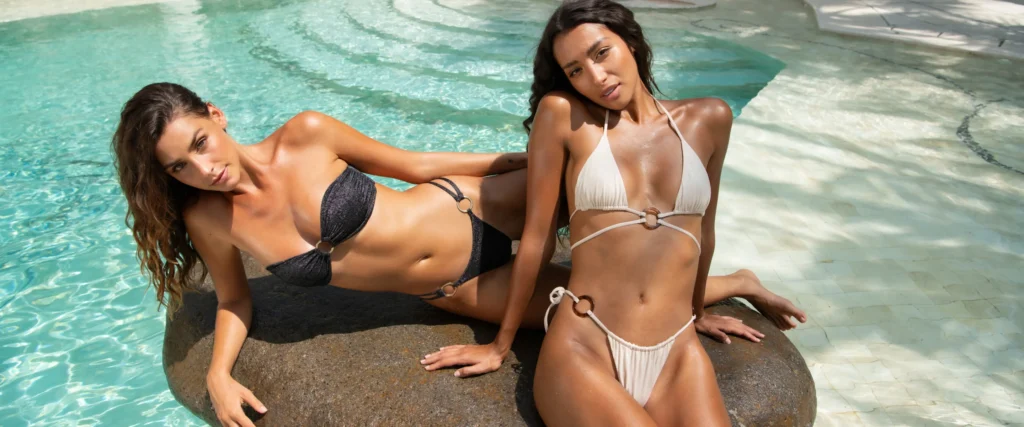
How to Start a Swimwear Brand: A Step-by-Step Guide Starting your own swimwear brand is an exhilarating journey—and we’re here to make it seamless and rewarding. At Swimwear Bali, we’ve helped countless entrepreneurs launch successful swimwear lines with our streamlined process, expertise, and commitment to quality. Let’s break it down step by step. Step 1: Envision Your Brand Your swimwear line should reflect your unique vision. Are you drawn to bold, colourful prints or clean, minimalist designs? Do you prioritize sustainability or focus on high-performance features? Identifying your target audience and what sets your brand apart is the foundation for creating a collection that resonates. Step 2: Choose Sustainable Fabrics The fabric is the soul of any swimwear collection. At Swimwear Bali, we specialize in eco-friendly materials like ECONYL® and REPREVE®, which are not only luxurious and durable but also align with modern consumer values. Our team will guide you in selecting fabrics that complement your designs while meeting your brand’s sustainability goals. Step 3: Design Your Collection Collaborate with our expert design team to bring your ideas to life. From sketching initial concepts to refining the final details, we’ll help you craft a collection that embodies your brand’s essence. Want custom prints, innovative features, or tailored fits? We’ve got you covered. Step 4: Sample and Refine Perfection takes time, and our sampling process ensures every piece is just right. You’ll receive prototypes to test the fit, fabric, and overall look. Provide feedback, and we’ll make adjustments until you’re completely satisfied. This stage is crucial to guarantee your swimwear meets the highest standards. Step 5: Start Production Once you’re thrilled with the samples, it’s time to move to production. Our state-of-the-art facilities and skilled team ensure every item is crafted with care and precision. Whether you’re launching a small batch or scaling up, we’ll deliver swimwear that exceeds expectations. Step 6: Showcase Your Brand Now comes the exciting part—presenting your swimwear to the world. While we don’t offer direct marketing services, we’re here to support you with advice on product photography, pricing strategies, and other elements to position your brand for success. With standout swimwear and the right approach, your brand will make a splash in the industry. Why Partner with Swimwear Bali? We’re more than a manufacturer—we’re your partner in creating a swimwear line that stands out. With our blend of expertise, eco-friendly practices, and customer-focused approach, we ensure your journey from concept to production is smooth and stress-free. Ready to dive in? Let’s turn your vision into a reality.
Why Swimwear Bali Is Your Ultimate Manufacturing Partner
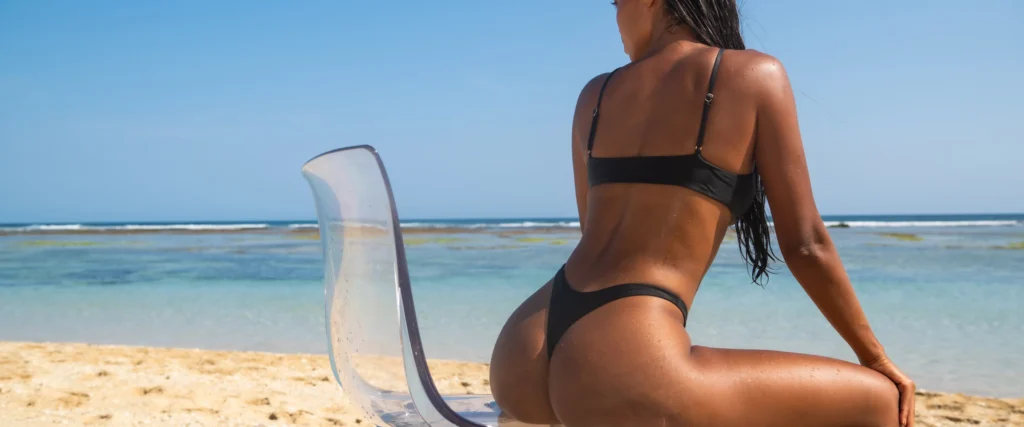
Why Swimwear Bali Is Your Ultimate Manufacturing Partner Ethical Manufacturing with a Heart Sustainability isn’t just a trend for us—it’s our foundation. We offer a wide selection of eco-friendly fabrics, including regenerated nylon from Carvico & ECONYL in Italy and REPREVE® from the US. By choosing Swimwear Bali, you’re joining a movement that values the planet and aligns perfectly with ethical, forward-thinking brands. Customization Tailored to Your Vision Your brand deserves to stand out; we’re here to make that happen. Our flexibility and low minimum order quantities (MOQs) make us a favourite among brands at every stage: Samples: Start with as little as one piece to perfect your designs. Bulk Orders: Our MOQ is just 30 pieces per design, with the option to mix colours and sizes. The minimum is 3 pieces per design’s colour and size, totalling 300 pieces. Whether you’re an emerging brand or scaling up, we’ve got you covered. Pricing That Works for You We believe in giving you the best value while ensuring your success:Tax-Free Advantage: As Bali’s only swimwear manufacturer with a tax-free license, we save 35% on high-quality imported fabrics—savings we pass directly to you.Fair Margins: Our gross profit margin is just 20%, unlike competitors, who often double their costs. With us, you’ll maximize your profits without compromising on quality. Innovation at Every Step Our cutting-edge facility is where magic happens. From digital 2D AutoCAD pattern makers ensuring flawless fits to a team of seasoned artisans, every piece we produce combines precision with craftsmanship. Visit our studio to see your vision come to life with meticulous attention to detail. Decades of Expertise With nearly 35 years under our belt, we’ve mastered every swimwear style imaginable. Whether you’re envisioning classic bikinis or complex one-pieces, our deep knowledge ensures your designs are functional, stylish, and built to last. It’s no wonder we’re celebrated as Bali’s top swimwear manufacturer. Speed Meets Simplicity Time is money, especially in fashion. That’s why we make launching your collection as seamless as possible: Stock Colors: Begin production immediately with no MOQ for stock colours, allowing you to diversify your collection effortlessly. Imported Colors: Need something custom? We’ve got you covered. Imported colours require a 6-week lead time and larger fabric quantities, which is ideal for scaling brands. By leveraging stock colours, you’ll avoid the common pitfall of running out of stock and waiting months for replenishment. Staying ahead of your competition means keeping your store stocked and your customers happy. Personalized Support for Long-Term Growth We’re more than just a manufacturer—we’re your partner in success. From the moment you reach out, our swimwear specialists guide you step-by-step, ensuring a smooth journey from concept to completion. Our flexible approach lets you blend custom designs with ready-to-order stock, so you can place orders and receive them in as little as four weeks. Let’s Build Your Brand Together Partnering with Swimwear Bali means joining forces with a team that’s as invested in your success as you are. With a blend of experience, innovation, and sustainability, we’re the go-to choice for swimwear brands worldwide.
10 Common Questions About Swimwear Manufacturing, Answered
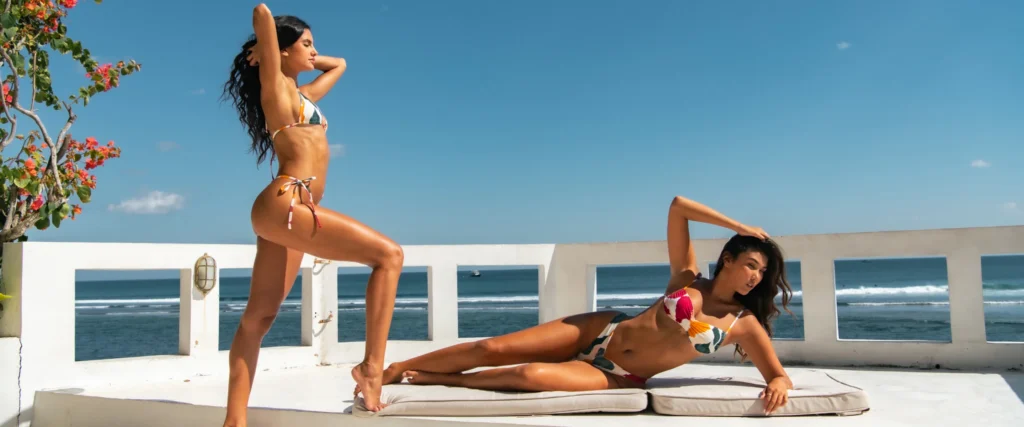
10 Common Questions About Swimwear Manufacturing, Answered Dreaming of launching your own swimwear brand but feeling swamped with questions? Relax—we’ve got you covered. Here are answers to the top questions from budding designers like you. Let’s dive in: 1. What’s the Minimum Order Quantity (MOQ) for Samples? Great news: you can start small! For samples, you can produce as few as one piece, allowing you to check our quality without committing to a large amount of samples upfront. 2. What’s the MOQ for Bulk Orders? When it comes to bulk orders, we make it easy for small brands to grow. Our MOQ is as low as 30 pieces per design, three pieces per style, colour and size, with a total PO of 300 pieces. This allows multiple styles and colours to be added without overstocking. 3. How Long Does Production Take? We’re all about efficiency and quality. Once your samples are approved, production typically takes 4 weeks. This timeline ensures each piece meets the highest standards while keeping your launch schedule on track 4. Can I Use My Own Designs? Absolutely! We specialize in turning dreams into reality. Whether you’ve sketched your ideas or have a fully developed tech pack, we’re here to bring your custom designs to life. For more details, check out our FAQ section or get in touch to discuss your specific needs. 5. Why Are Your Prices Lower Than Other Bali Manufacturers? Our pricing advantage comes down to two key factors: Tax-Free Status: As the only swimwear manufacturer in Bali with a tax-free license, we save 35% on imported high-grade fabrics. This significant saving is passed directly to you. Lean Margins: We operate with a lean margin, making no more than 20% gross profit on our prices. Unlike many manufacturers who double their costs, we’re focused on keeping your costs low so you can maximize your profits. 6. What’s the Benefit of Choosing Stock Colors? Stock colours are a game-changer for speed and flexibility. Here’s why: Instant Availability: We can start production as soon as your order and deposit are received. No MOQ: With no minimum order requirements for stock colours, you can offer a wider variety of shades in your collection. Quicker Turnaround: Imported colours require a 6-week lead time and come in 70-meter lots (about 100 bikini sets). For smaller brands, stock colours make more sense. 7. Can I Visit Your Facility? We’d love to meet you! You’re always welcome to visit our facility, meet the team, and take a behind-the-scenes tour. One highlight of our facility is our amazing studio, where you can see our digital 2D AutoCAD pattern maker in action. It’s a fascinating glimpse into how we create perfectly fitted swimwear. Starting your swimwear line doesn’t have to be daunting. With our expertise and transparent process, you’re not just creating swimwear—you’re building a brand. Scheduling a callback with one of our swimwear specialists often helps brand owners and start-ups get started faster in a more coordinated fashion. Have questions? You can find much answered on our FAQ page or chat via WhatsApp. Let’s make waves together!
Why Starting Your Swimwear Brand is Easy, Affordable, and Profitable with Swimwear Bali
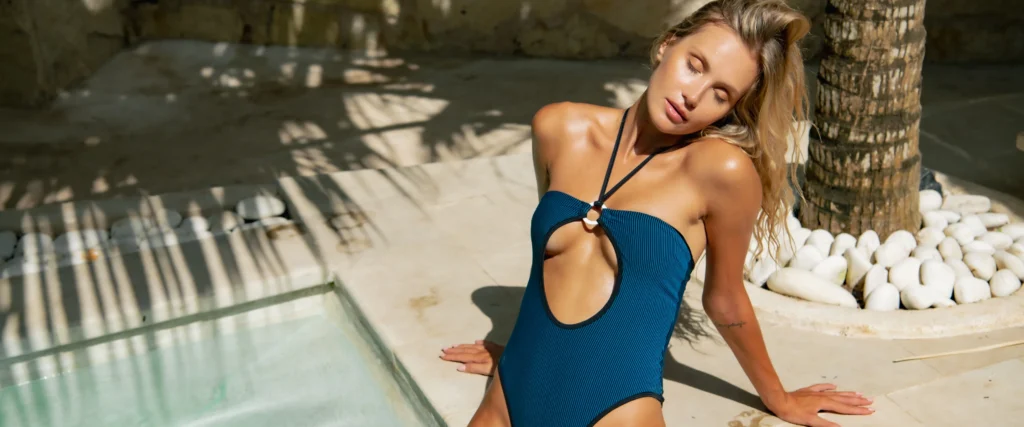
Why Starting Your Swimwear Brand is Easy, Affordable, and Profitable with Swimwear Bali Starting your own swimwear brand might seem like a big leap, but with Swimwear Bali, it’s simpler, more affordable, and far more rewarding than you think. As the only tax-free licensed manufacturer in Bali, we offer prices that are up to 30% lower than anyone else on the island—giving you a significant edge in profit margins. We don’t just stop at affordability. We supply some of the world’s top swimwear brands with high-quality, sustainable swimwear crafted with cutting-edge technology and expertise. With fabrics made from recycled materials like ECONYL®, your swimwear will not only look incredible but also help reduce carbon emissions by up to 80%, dramatically lowering your brand’s carbon footprint. By working with us, you’ll have everything you need to rightfully claim your production is eco-friendly, a major selling point for today’s conscious consumers. It’s time to make your mark in the sustainable swimwear market—and Swimwear Bali is here to help you do it profitably. Shop with Ease: Order Samples or Bulk Directly Online We’ve made it ridiculously easy for you to get started. Our online shop is designed for both startups and established brands, letting you quickly: Order Samples: Test your designs and feel the quality of our sustainable fabrics before committing to a larger order. Buy Bulk Hassle-Free: Once you’re ready to scale up, bulk orders are straightforward, with clear pricing and fast processing. Explore Sustainably: Browse our curated range of styles, colours, and eco-friendly fabrics—everything you need to create a standout collection. Whether you’re sampling designs or going straight to production, our shop is your one-stop solution. Stay tuned for the link—it’s your first step toward launching your swimwear brand! Choosing the Perfect Manufacturer for Your Swimwear Brand When it comes to turning your vision into reality, the right manufacturer makes all the difference. Here’s why Swimwear Bali is the ultimate partner: Eco-Friendly Fabrics: We specialize in sustainable materials like ECONYL® and REPREVE®, which are made from recycled plastics and reduce environmental impact. High-Quality Digital Printing: Our cutting-edge digital printing ensures vibrant colours on soft nylon fabrics. Forget sublimation on polyester—it doesn’t compare. Flexible Quantities: No need to overcommit. Unlike other manufacturers, we offer smaller, flexible fabric rolls so you can experiment with different styles and colours. TIP: By partnering with a manufacturer like Swimwear Bali, known for ethical practices and expertise in sustainable swimwear, you’re setting your brand up for success right from the start. Build Strong, Reliable Relationships with Suppliers The secret to long-term success? A trustworthy supplier who supports your growth. Here’s how we make it easy: Ethical Standards: We’re certified for using organic fabrics and sustainable production, so your brand can genuinely claim to be eco-friendly. Problem-Solving Partners: Challenges will come, but our team is here to help you navigate them—think of us as your production allies. TIP: Brands that partner with Swimwear Bali often praise our consistent quality, competitive pricing, and on-time delivery. Build a Standout Online Presence In today’s digital world, having an online presence isn’t optional—it’s your lifeline to customers. Here’s how to get it right: Launch Early: Secure your domain and put up a simple “coming soon” page while you finalize your collection. This helps with SEO and builds anticipation. Leverage Social Media: Platforms like Instagram are perfect for showcasing your designs and connecting with eco-conscious customers. TIP: Use blogs and lookbooks on your site to drive traffic. Customers love learning about your journey and sustainability efforts. Share Your Story: Create Engaging Content Your brand story is what makes you stand out. Share it proudly and authentically to connect with your audience. Highlight Your Why: Talk about why you chose sustainability and what inspires your designs. Customers love supporting brands with a purpose. Optimize for Search: Use tools like Grammarly and ChatGPT to polish your content and make it SEO-friendly. Blogs on swimwear trends or sustainable fabrics can boost your visibility. TIP: Start with your homepage—it’s your brand’s first impression. Make it clear, compelling, and all about your values. Deliver Customer Service That Wows Great customer service isn’t just a bonus—it’s what keeps customers coming back. Be Responsive: Reply quickly and positively to all inquiries. Customers notice and appreciate fast communication. Encourage Feedback: Listen to your customers and improve based on their suggestions—it’s a win-win. TIP: A single glowing review can bring in dozens of new customers. Go the extra mile to ensure your buyers are thrilled. Sustainability: Your Brand’s Biggest Strength In today’s market, sustainability is more than a trend—it’s a requirement. Swimwear Bali helps you build a brand that’s genuinely eco-friendly: Eco-Friendly Materials: Our fabrics are certified and reduce environmental impact, allowing you to offer products that align with modern consumer values. Carbon Footprint Reduction: Swimwear produced with recycled materials generates up to 80% fewer CO2 emissions, allowing you to inform your customers that your products are produced eco-friendly. TIP: Showcase your sustainability efforts on your website and marketing materials. Transparency builds trust and loyalty with your audience. Final Thoughts Starting a sustainable swimwear brand has never been easier—or more profitable. With Swimwear Bali by your side, you’ll enjoy lower costs, higher quality, and a genuine claim to co-friendliness that today’s consumers demand. Ready to make your vision a reality? Explore our sustainable fabrics, contact us today, or schedule a call-backwith a swimwear specialist. Together, we’ll create a swimwear line that’s not only beautiful but also makes a positive impact on the planet. Let’s build your brand—and the future of sustainable fashion—together!
Just Launched: Swimwear Bali’s Summer 2025 Ready Designs Collection
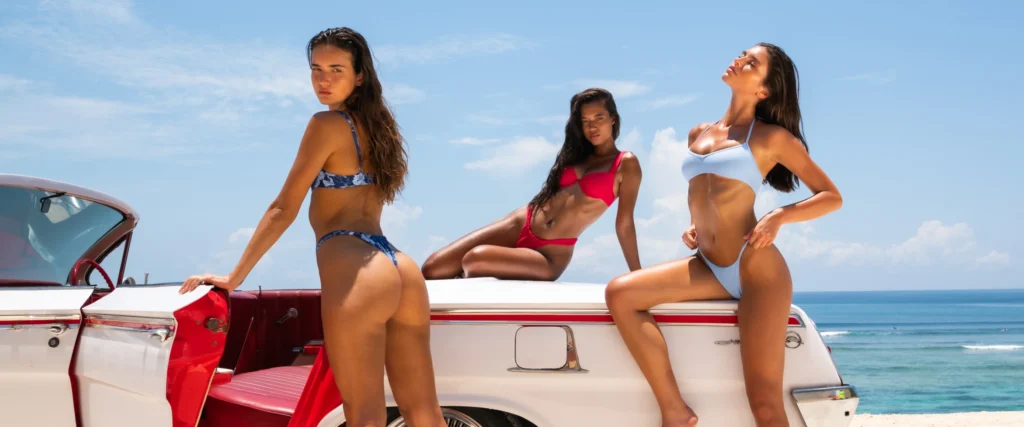
Just Launched: Swimwear Bali’s Summer 2025 Ready Designs Collection We’re excited to launch our 2025 Ready Designs Collection—a curated selection of some of the best selling swimwear styles designed to allow you to add some great shapes for the 2025 summer season. Whether you’re starting your first sustainable swimwear line or expanding an established collection, this range is crafted to inspire your creativity and streamline the process, making it easier than ever to bring your vision to life. With premium fabrics, innovative designs, and a commitment to sustainability, the 2025 Ready Designs Collection is here to turn your swimwear dreams into reality—and make the journey as effortless as possible. Designs You’ll Love, Made to Fit Our 2025 collection has been assembled to save both time and money without sacrificing quality. As all of our designs have been patterned and graded to international body sizes, it allows you to move directly to your bulk PO without paying and waiting for samples to be produced. By streamlining this part of the process, we help you launch faster and reduce unnecessary costs while still offering the flexibility to customize your designs. Make It Your Own Customization is where the magic happens. Choose your designs and personalize them with the following: Premium fabric options, including plain, textured, and printed styles. Your brand’s unique palette of colours and patterns. A heat-pressed logo on the inside of each piece, giving your collection that polished, professional look. The result? Swimwear that’s uniquely yours—perfectly reflecting your brand and vision. Mix and Match Made Simple Want to combine some of our ready-to-order designs with your own custom ideas? We’ve got you covered. Here’s how easy it is: Send us front and back screenshots of your custom designs with a few notes. Within a day or two, we’ll send you the best possible price for premium-quality pieces. Relax while we bring your ideas to life. By mixing our pre-designed options with your custom creations, you get all the benefits of speed, quality, and creativity—without the hassle. Sustainability You Can Feel Good About At Swimwear Bali, we believe in making fashion kinder to the planet. That’s why we offer sustainable fabric options like: Econyl® from Italy: Made from recycled fishing nets and ocean waste. Carvico® from Italy: Durable, high-quality fabrics repurposed from discarded materials. Repreve® from the US: Crafted from recycled plastic bottles, reducing pollution and conserving resources. Using these eco-friendly materials cuts CO₂ emissions by up to 80%, so your swimwear isn’t just stylish—it’s part of a solution for a more sustainable future. Stress-Free Swimwear Production Launching or scaling a swimwear line has never been easier. With our ready designs, the process is simple: Pick Your Favorites: Select from our pre-graded designs, already sized for real bodies. Make It Yours: Customize fabrics, colours, patterns, and branding. Let Us Do the Rest: Once you place your order, our team handles everything, delivering swimwear that’s crafted to perfection. This streamlined approach saves time, reduces costs, and gets your collection into your customers’ hands faster. Let’s Make It Happen We’re here to help you take the next step toward launching or expanding your swimwear line: Talk to Us: Schedule a callback with one of our experts to discuss your ideas. Schedule Now. Get Inspired: Browse our ready-to-order designs and see what’s possible. View Designs. Start Small: Order a Starter Pack to feel the fabrics, check the quality, and take your first step toward building your brand. Order Starter Pack. Your Brand, Your Way With the 2025 Ready Designs Collection, you don’t just get swimwear—you get a partner who’s with you every step of the way. From pre-graded designs that save you time and money to fully customized options, we ensure your collection is everything you dreamed of and more. Let’s create something extraordinary together. Start your journey today, and let’s bring your swimwear vision to life. Ruched Bandeau with V-Cut Bottom This sleek bikini set features a strapless, ruched top and V-cut scrunch-back bottoms, enhancing curves with a secure, contouring fit for effortless, sun-kissed style VIEW IN CATALOGUE Wide Strap Underwire Top with High Hip Bottom This chic bikini set pairs a supportive underwire top with wide straps for a secure, flattering lift and high-rise bottoms with wide sides to elongate legs and enhance curves. VIEW IN CATALOGUE Timeless Halter Top & Bottom with Tie Details This classic halter bikini features adjustable tie-back and side ties for an elegant and flattering fit. VIEW IN CATALOGUE Asymmetric Silhouette One Piece with Luxe Ring Touch This stunning one-piece features a sleek asymmetric design with a polished ring accent, bringing a touch of sophistication to your beach style. VIEW IN CATALOGUE Asymmetric One Piece with Front & Back Cut-Outs This bold, sculpted swimsuit features edgy cut-outs and a striking asymmetric design, crafted to captivate from every angle. VIEW IN CATALOGUE Mini Sarong Wrap Crafted from 100% pure silk, our best-selling mini wrap is the perfect complement to any swimwear line. VIEW IN CATALOGUE Six Rings Strappy Tie This striking bikini set showcases six statement rings and delicate straps, blending effortless style with a hint of glam. VIEW IN CATALOGUE
Diving Deep: 6 Overlooked Strategies for Swimwear Success
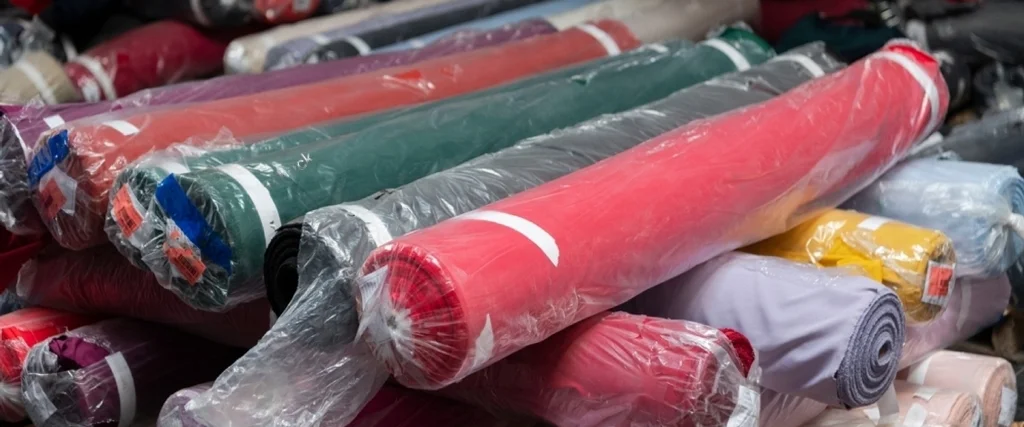
Diving Deep: 6 Overlooked Strategies for Swimwear Success Hey there, aspiring swimwear moguls! After 35 years in the global swimwear manufacturing game, I’ve picked up a thing or two about what makes a brand sink or swim. Today, I’m pulling back the curtain on six often-overlooked strategies that could be the difference between a fleeting summer fling and a long-term love affair with success. 1. Naming Your Brand: More Than Just a Pretty Word Let’s kick things off with your brand name. This isn’t just about finding something catchy – it’s about setting the foundation for your entire business. When you’re brainstorming, think about creativity and strategy. Your name should resonate with your vision and appeal to your target market. Once you’ve got some contenders, it’s time for the real work. Check if the .com domain is available – trust me, you want that online real estate. But don’t stop there. Do sweep all major social media platforms, even those you’re not planning to use now. You don’t want to find out later that someone’s squatting on your brand name on TikTok or whatever the next big thing is. If your dream name is taken on some platforms, consider adding “.official” to your handle. It keeps things consistent, which is key for brand recognition. Take your time with this—spend a few days if you need to. Your brand name is a long-term investment—it’s not just a label; it’s the face of your business, your values, everything. Choose something you’ll be proud to see on labels and storefronts for years to come. 2. Picking Your Manufacturing Partner Selecting the right manufacturer is a decision as crucial as designing your signature pieces. Your ideal partner should be more than just a supplier; they should be a collaborator in your brand’s growth journey. First and foremost, look for a manufacturer with a proven track record in custom-made swimwear production. If the supplier is more geared to selling you their own styles, beware, as they will be less skilled in the art and complexity of assembling swimwear that fits the body like a glove and offers amazing body-enhancement properties. They should demonstrate expertise in working with various fabrics, particularly those suited for swimwear, such as Nylon, spandex, and sustainable options. Their knowledge of swimwear-specific construction techniques is invaluable for ensuring your products meet quality standards and perform well in water. Consider their capacity to scale with your brand. As your business grows, can they handle increased order volumes without compromising on quality or delivery times? A manufacturer with flexible production capabilities can be a significant asset as you navigate seasonal demands and unexpected surges in popularity. Diversification is key. Seek a partner who can help you expand beyond basic swimwear into complementary products like sarongs, coverups, resort wear and even intimates. This versatility allows you to create cohesive collections and offer customers a more comprehensive brand experience. Communication and responsiveness are crucial. Your manufacturer should be easily reachable and quickly address any concerns or queries. Look for a partner who values transparency in their processes and is open to feedback and collaboration on designs. Consider their commitment to sustainability. With increasing consumer focus on eco-friendly practices, a manufacturer who can guide you through sustainable material choices and production methods can give your brand a competitive edge. Pricing and minimum order quantities (MOQs) are also important factors. While cost shouldn’t be the only consideration, your manufacturer’s pricing structure should allow for healthy profit margins. Lower MOQs can be beneficial, especially when you’re starting out or want to test new designs. Lastly, don’t underestimate the importance of location and logistics. A manufacturer with streamlined shipping processes and favourable export terms can save you time and money in the long run. Remember, the right manufacturing partner can catalyze your brand’s success, helping you navigate production’s complexities while focusing on design and marketing. Take the time to find a manufacturer who aligns with your brand values and long-term vision. When chosen wisely, this partnership can be the foundation for building a thriving swimwear empire. 3. Branding: Making Your Mark Now, let’s talk logos and branding. Adding your personalized, custom-branded logo across your collection is key to building brand recognition. But it’s more than just slapping a logo on a swimsuit. Develop a unique visual style and voice that reflects your brand’s personality across all marketing channels. Consistency in design, colour schemes, and messaging is crucial. Remember, branded simplicity sells. Get this organized from the start before you place your first order. 4. Fabric Matters: The Foundation of Quality When picking a manufacturer, don’t overlook their fabric inventory. It’s a bigger deal than you might think. Imagine having a killer design ready to go, but your manufacturer is out of the fabric you need. Frustrating, right? Partner with someone who can import these fabrics into Bali tax-free and one who keeps a good stock of fabrics and colours at all times. Make sure they’re not just hoarding leftover scraps—you want fresh, high-quality materials for your brand. If you’re aiming for that premium feel, look for a manufacturer who stocks top-notch sustainable fabrics like Italian ECONYL®, Carvico®, or American REPREVE®. These fabrics aren’t just great for the environment—they’re what the high-end swimwear market is buzzing about. Having these fabrics readily available means you can jump into production as soon as you’re ready. No waiting around for fabric imports. In the fast-paced world of fashion, that quick turnaround can be the difference between making it and breaking it. You don’t want your website or store empty of lines, colours, and sizes while you wait weeks for fabrics to arrive. Plus, using Italian & Amercian recycled eco-friendly fabrics can give your brand that extra edge. Customers love knowing they’re making a sustainable choice. 5. Expanding Horizons: Diversifying Your Product Range Think beyond bikinis. Look for a manufacturer who can help you expand into swimwear coverups, lingerie and other complementary items. This approach tells a more complete brand story and can significantly
Swimwear Bali: Your Premier Partner for Sustainable Swimwear Manufacturing in Indonesia
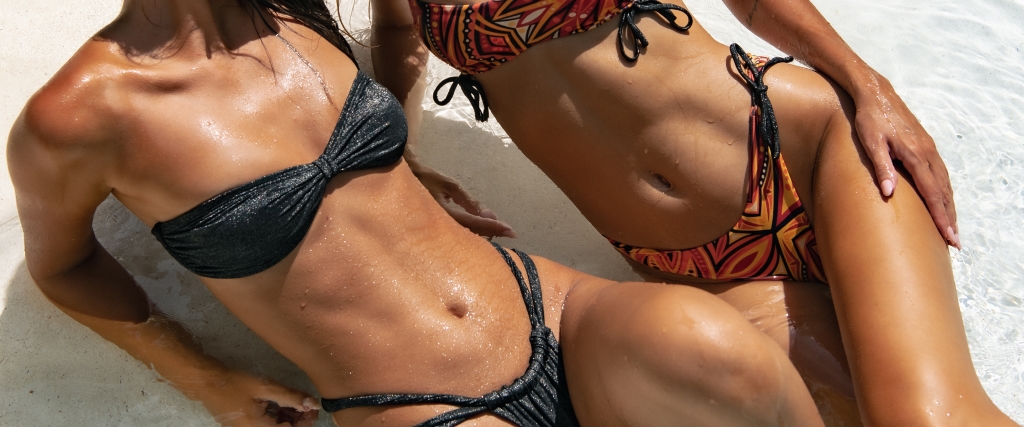
Are you looking to make a splash in the swimwear industry? Look no further than Swimwear Bali, the leading swimwear manufacturer in Bali, Indonesia. With over 30 years of experience, we’re not just crafting swimwear; we’re shaping the future of sustainable beach fashion. Why Choose Swimwear Bali for Your Swimwear Production? 1. Unparalleled Expertise in Custom Swimwear Design Our unique London-Bali collaboration combines Western design trends with Balinese craftsmanship. Whether you’re a startup or an established brand, our team can bring your custom swimwear designs to life with precision and flair. 2. Eco-Friendly Swimwear Manufacturing Sustainability isn’t just a buzzword for us—it’s our commitment. We specialize in producing premium-grade recycled and sustainable swimwear. Using materials like Vita by Carvico from Italy, ECONYL® regenerated Nylon, and REPREVE® recycled Nylon from the US ensures your swimwear is as kind to the environment as it is to your customers, with exceptional body-sculpting properties. 3. Selecting Colours We hold the largest ready-to-cut stock colours in Bali, some 80,000 meters of 85 trending colours, imported and recycled from the US & Italy. Selecting from our stocks, the moment you place a bulk PO, we are ready to produce your order without having to wait weeks or more for fabrics to be imported. 4. Cutting-Edge Digital Printing on Swimwear Fabric Stand out in the crowded swimwear market with our digital printing capabilities. Create vibrant, long-lasting prints that blend with your plain colours to create a cohesive individual collection. 5. Ready-to-Order Swimwear Collections Need a quick start? Our pre-designed collections offer on-trend styles that fit international body sizes. Many buyers skip sampling and go straight to bulk orders, saving time and money. 6. State-of-the-Art 2D AutoCAD Digital Pattern Making Working in AutoCad digitally, Swimwear Bali reduces a task that typically takes days to one that can be accomplished in hours with millimetre precision. 7. Swimwear Starter Packs and Fabric Packs New to the industry? Our starter packs provide tangible samples of our quality and variety, helping you make informed decisions about your swimwear line. 8. Guidance on Launching a Sustainable Swimwear Business We don’t just manufacture; we mentor. Our team offers expert guidance on how to start and grow your sustainable swimwear brand efficiently and economically. Book a callback, chat via WhatsApp, or email your designs for pricing. 9. Customizing Swimwear Accessories Adding your branded logo to accessories will help your brand stand out, creating an image of professionalism and brand identity. 10. Ethical Manufacturing Practices We prioritize the well-being of our employees with fair wages and medical insurance for each employee, their spouse & up to three siblings, including doctors’ fees, medication & hospitalization. Easy Start- Getting started in your own Swimwear Journey. Share Your Vision: We’re ready to listen, whether you have detailed designs or just a concept. Choose Your Approach: Opt for custom designs, select from our ready-to-order collections, or mix both. Select Your Fabrics: Pick from our range of sustainable, high-quality materials. Prototype and Perfect: We’ll create samples for your approval, ensuring every detail meets your standards. Production and Quality Control: Your designs come to life under strict quality measures. Delivery: Receive your premium swimwear, ready to sell from the box. From dispatch to delivery, it will take a maximum of 4 working days. Ready to Dive In? Don’t let your swimwear dreams remain on the drawing board. With Swimwear Bali, you’re choosing a partner committed to quality, sustainability, and your success. Get Your Free Swimwear Manufacturing Consultation Now! Contact us today to start your journey in sustainable swimwear manufacturing. Let’s create waves in the fashion world together! Contact Us
